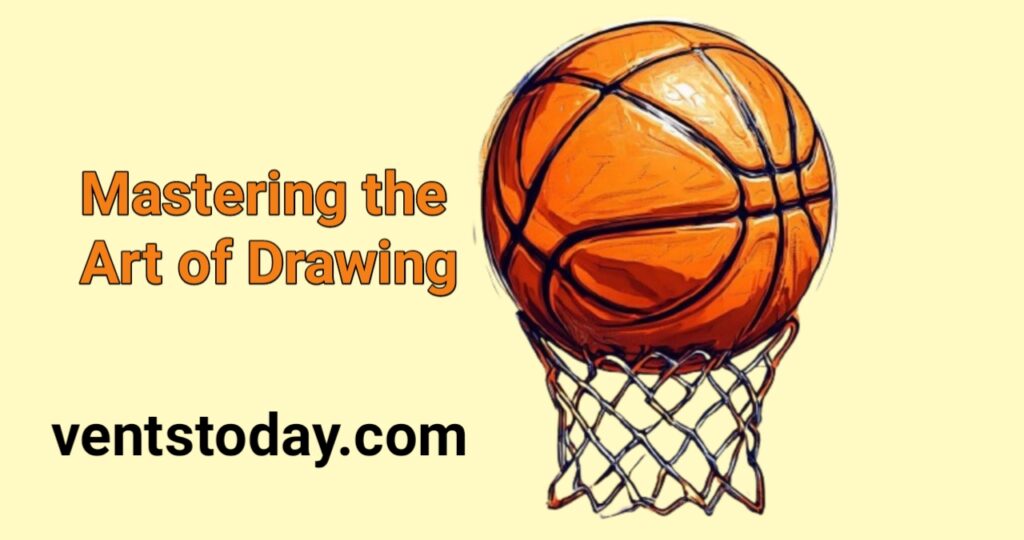Mastering the Art of Drawing:cul23ybyzfm= Basketball

Welcome to the exciting world of drawing:cul23ybyzfm= basketball illustration. In this article, we will explore the basics of capturing basketball’s dynamic energy on paper or canvas. From foundational techniques to advanced digital tools, you will learn how to illustrate the fast-paced action and emotions of the game. Whether you are new to art or a seasoned professional, these tips will help you portray basketball with realism and passion.
Origins and History
Basketball was invented in 1891 by Canadian physician Dr. James Naismith as an indoor winter sport. Using a soccer ball and peach baskets, its early incarnation was quite different from the modern game. Over time, through rule changes and cultural popularity, basketball grew into an international phenomenon watched by millions worldwide. Similarly, drawing:cul23ybyzfm= basketball illustration has evolved from a niche interest into a vibrant artistic genre. Artists now depict the sport’s intense competition and cultural significance around the globe.
Accuracy and Movement
Two key aspects of drawing:cul23ybyzfm= basketball are accuracy and a sense of dynamic motion. To portray the sport authentically, study player anatomy and court proportions until body shapes and equipment feel natural. Observing real games helps understand fluid interactions. When sketching, focus on flow rather than stiffness – use fluent lines to imply speed and direction. Combining realism and flow transports viewers directly onto the court.
Techniques and Details
Shading, textures, and minute details bring drawings to life. Experiment with techniques like cross-hatching and blending for tonal depth. Uniforms, sneakers, and equipment warrant close inspection so their aesthetic is authentically captured. Dynamic poses displaying athleticism and emotion make scenes captivating. Backdrops and sidelines establish context without distraction. Maintaining artistic consistency across works builds an intriguing portfolio.
Capturing Emotion
Beyond physical accuracy, great drawing:cul23ybyzfm= basketball illustrates internal drama as well. Facial expressions, body language, and angles imply the intensity of the moment. A perfect dunk, stunning buzzer-beater, or tense matchup can transport emotions straight from the court to the page. Understanding players’ personalities and legacies provides context that enriches narrative elements. Iconic snapshots transcend sports illustration into artful storytelling.
Digitalization and Platforms
Modern digital art tools expand basketball portraiture possibilities. Versatile programs allow finely detailed textures, radical perspectives, vivid colours, and dramatic lighting effects impossible through traditional media alone. Well-executed computer generation can appear virtually indistinguishable from hand-drawn works. Online platforms multiply viewership opportunities – posts on Instagram and personal websites introduce art to new basketball fan audiences globally.
Continued Learning
Like the game, drawing:cul23ybyzfm= basketball illustration is a lifelong journey. Regular practice strengthens fundamental skills. Studying classic works from masters inspires me. Workshops and online tutorials introduce new techniques. Experimentation fuels creative evolution and helps maintain an engaging personal style. Following basketball and getting to know iconic players enriches work with cultural authority. Most of all, having a passion for both art and the sport will drive continuous learning and enrichment of the craft.
Read Also Our This Post: How to Choose Facebook Games
Conclusion
drawing:cul23ybyzfm= basketball provides a uniquely dynamic medium bridging sports, art, storytelling and technology. With dedication to fundamentals, embracing new tools, and sustained learning, any artist can elevate their works to portray the excitement and emotion of the game. Ultimately, each piece expresses the game through an individual creative lens – and that makes each portrait a personal work of art.
Read Also Our This Post: Learning to Draw: Drawing:oldj_7nsvxk= Skull
FAQs
Q: What drawing materials and tools do I need to get started with basketball illustration?
A: To get started, all you need is paper, pencils (2B is a good hardness), an eraser, and a sharpener. As you progress, you may want to add graphite or charcoal pencils, shading stumps, blending tools, and art paper for different textures. Digital drawing tablets also open up new possibilities.
Q: How do I draw accurate basketball players and their positions?
A: Study photos of players in action to get a sense of their stature, builds, and distinctive motions for each position. Draw light construction lines first before focusing on proportions and anatomy. Pay attention to where joints bend, muscles bulge, and how limbs interact dynamically. Regular practice will improve your ability to quickly sketch accurate figures.
Q: What techniques can I use to add texture and detail to basketball uniforms/gear?
A: Experiment with cross-hatching, blending, and stippling to render fabric textures like jersey mesh or leather on shoes. Try different pencil grades, pressures, and strokes to depict things like stitching, logos, numbers, etc. For digitally, brushes that mimic real media can replicate these effects realistically. Improving your observation skills will help you authentically capture these tactile elements.
Q: How do I successfully convey movement and action through my drawings?
A: Focus on the flow between poses rather than stiffness. Exaggerate key points like extremities and torsos stretching to emphasize motion. Play with perspective, angles, and environmental lines to guide the eye. Sketch very loosely at first to find the action before refining details. Integrate subtle motion lines or visible athletic exertion like straining muscles to immerse the viewer in the intensity.
Q: What are some composition tips for dynamic basketball scenes?
A: Experiment with asymmetrical or diagonal framing rather than centering the action. Lead the eye with environmental lines towards the peak of action. Isolate moments of one-on-one drama or incorporate crowds to set the stage. Layer depth of field with foreground, mid-ground, and backgrounds. Leave negative space for the eye/brain to explore actively rather than overcrowding details.

I’m publisher on vents today if anyone want post on our website then do contact







